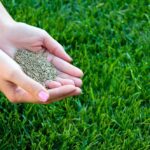Do you happen to have a favorite gardening tool? Maybe something you keep within arms-length every time you step into the garden? Okay, what do you usually use to make digging, growing, pruning or harvesting a little easier on your back or much more soothing for your spirit? The essential tool for one or each of these processes will vary from one gardener to another and sometimes, the scopes extend even to regions and seasons. Based on basic knowledge and expert gardening advice, here are 10 essential, barely overlooked tools you will find useful for your yard:
Weeders

Different manufacturers have different names for it but this tool may commonly be known by the name dandelion dagger. It’s a perfect option for prying weeds with taproots and crabgrass. Given its long and slender end that appears like some cross between a screwdriver and a two-tine fork, it’s easy for it to penetrate into the soil to remove the roots of weeds from deep under the ground. If you’ve got a large garden then a dandelion dagger might not be up too the job, a broadcast spreader would allow you to kill the weeds in no-time. If you need a little extra help getting your garden ready or just want some gardening tips and advice.
Hand Trowel

Also known as a planter, this tool is used for planting bedding plants in flower beds, pots, planters or window boxes during summer. They usually come with a metal, plastic or wooden handle though wood is often preferred for providing better grip in the hand.
Leaf Blower

A leaf blower is considered as an essential gardening tool these days. You need this machine to enhance the garden’s beauty. It organizes the leaf’s pile. It typically comes with two major units, handheld and backpack mounted units. People tend to use the second one mostly. It’s more powerful, sophisticated and sturdy. Check backpack leaf blower review here.
Watering Can

While you can get away with a bucket, a watering can is great for watering pots, window boxes, and the likes. Watering with the rose removed it comes to play when rinsing an area you might have cleaned such as a garden seating or concrete. It can similarly be employed as a portable water source in refilling small hand sprayers.
Spade

A spade is probably the most essential gardening tool when it comes to digging holes to plant large flowers, shrubs or trees. It is also useful in hoeing weeds but it would be significantly heavier than a hoe which is actually the right tool for the job. In the same spirit, a spade can come in handy when shoveling small quantities of material and be edging flower beds and be chopping the roots of smaller trees before digging them up.
Garden Shears

This pair is also known as hedge trimmers or clippers. You will obviously need one of these if you have trees, shrubs or hedges through the tool can be used to trim grass along curbs, pavements, around shrubs and trees and at the edges of flower beds as well. Garden shears may look very simple, but they are one of the most important tools to have on this list. If you want one that would last you years if not a decade, read the tools reviews from bestoftools.com and you will surely find one that you like.
Rake

The function is in the name. This is a tool used in raking leaves or other debris into a pile. They come in different designs and types, all of which are designated differently. A lawn rake, for instance, is used to rake up leaves and moss from the surface of the lawn.
Secateurs

Also referred to as pruners or pruning shears, this tool is ideal not just for pruning roses but also snipping lumps from trees and shrubs that might be getting in your way. There are two types of secateurs – anvil and bypass. Bypass secateurs are like scissors, only with blades that slide by a blunt hook, while anvil shears have a single cutting blade that cuts into a branch pushed against a flat surface. Bypass pruners are designed for general pruning of softwoods but an anvil pruner can cut midway between the support system of a branch.
Hoe
Usually, this has a light blade and handle and is used in severing top growth on stone driveways and on weeds in beds. Should you have an aversion to using weed killing herbicides, this is probably an excellent alternative. For ease of use, however, the blade has to be kept razor-sharp.
Fork

Forks come in two types; there’s the digging fork and the lifting fork. Digging forks are used to dig into soil that contains lots of roots, stones or conjoined residue especially in conditions that a spade wouldn’t suffice. A lifting fork is used to lift hedge clippings, weeds or long grass for transfer from one point to another.
Garden Hose

This is an ideal tool for watering during dry spells but only if your water company is open to the idea. A garden hose is best on a reel not only because it’s easier to roll it up and keep your yard tidy, it also minimizes water as caused by leaks and warrants longevity.





